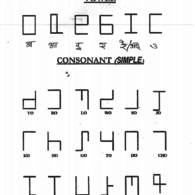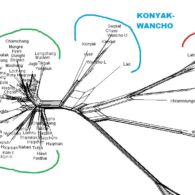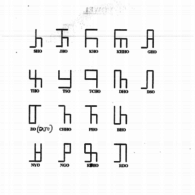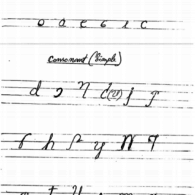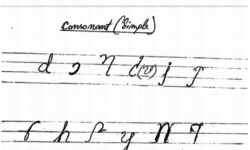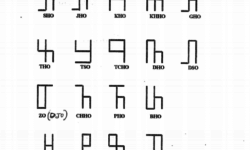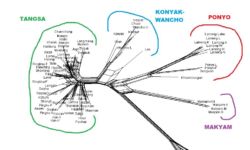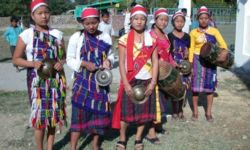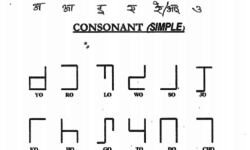Profile
A number of cultures, especially in the Zomia highland region that borders Southeast Asia, southern China and northeastern India, have creation myths about their writing system; the Tangsa (roughly 100,000 people in a cluster of about 70 sub-tribes who live along the border of India and Myanmar) have a creation-and-destruction myth.The traditional Tangsa belief is that the creator, Lord Rangfraa, gave their ancestors a writing system on deerskin, but, not understanding its value, they ate it and the script was lost — which, like other script-loss narratives of the region has the fascinating self-shaming quality of implying that they were still behaving like animals, that they were not yet ready to make the transition to a more civilized existence, and suffered for their ignorance.
Perhaps as a result, the Tangsa are largely very interested in orthography and literacy development, and in recent years, a number of orthographies have been proposed for the Tangsa languages. Most have been based on the Latin script, but at least two original indigenous scripts have emerged: Tangsa Khimhun and Tangsa Mossang.
Tangsa Khimhun (also called Rang-Frah Lipi) is a syllabary created by Latsam Khimhun, the secretary-general of the Rangfraa Faith Promotion Society, and continues to be associated specifically with that faith.
The more active indigenous script is Tangsa Mossang, created in 1990 by Mr Lakhum Mossang from Arunachal Pradesh in northern India to write specifically the Mossang (Muishvung/Muixshvungx) dialect of Tangsa, his native dialect.
Until around 2012, the script was only used in handwritten form by Lakhum Mossang and a small band of his students, all of them speakers of Muishvung (Mossang), but in 2019 members of the Tangsa community decided to promote the script of Lakhum Mossang and created the Tangsa Script Development Committee, which launched a public promotion of the script at the Pangsau Pass Festival in January 2020.
“By good luck,” writes Stephen Morey, an authority on scripts of the region, “I was able to attend that together with my colleague Kellen Parker van Dam, and at the request of the community we spent most of our field season in 2020 working on the script — fixing the font, meeting with community to discuss it, preparing the Unicode proposal.
“I like the script because I like the way it has incorporated tones within the vowels.”
Tangsa Mossang is fascinating, in fact, for having no fewer than 48 vowel symbols, and as a result the script is very well suited to express the full range of the spoken language — far better, for example, than the Latin alphabet, with its five vowels, can accurately express all the vowel sounds of English.
The momentum behind the script’s development has survived the passing of its author Lakhum Mossang, who died in 2020, having taught the script public events and festivals, and worked with community organizations, local government and schools to promote the script. In 2021 there were about 100 people using the script, and a primer for teaching it are being produced by Arunachal Pradesh Directorate of Elementary Education.
The Tangsa Mossang script was given preliminary approval for inclusion into Unicode in February 2021.
You can help support our research, education and advocacy work. Please consider making a donation today.

